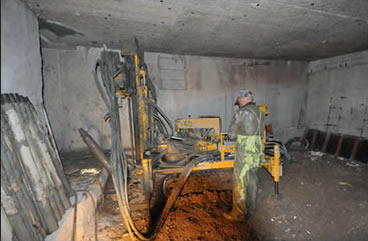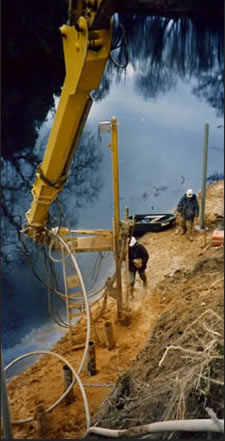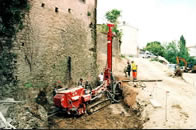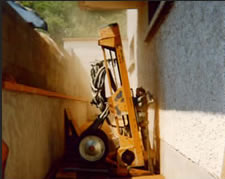Micropiles
When to use micropilesMicropiles are suitable for a number of undertakings: The mechanics of micropilesMicropiles may be exposed to two types of forces :
|
SheathingIf the environment is not stable, the use of a temporary sheath may be necessary to retrieve the drilling material and to set up the armature. This objective can be attained by implementing ODEX, a technique that makes it possible to use a sheath as work progresses. CorrosionThe metal armatures in use are susceptible to corrosion. When calculating dimensions it should be taken into account that the outer layer will be subjected to corrosion and will wear off. InjectionThe micropile must be covered in grout to ensure that the armature remains sealed to the ground. This technique protects the armature against corrosion, and makes it possible to transfer the strains to the ground. Several types of injection are possible: Connexions with the structuresMicropiles require a more or less significant absorber base. Installing sills and concrete blocks makes it possible to transfer the strains exercised on the structure to the micropiles. |
ArmaturesWhereas in some cases the use of full metal bars may be contemplated, it is generally more common to resort to steel tubes or metal profiles (HEA, IPN) which may compensate heavier loads and flexion strains.
A few figures- drilling diameters from 100 to 250 mm
A few maximum vertical-load values for a micropile anchored 2 m deep into a particular terrain :
|
« When carrying out underpinning works, it is necessary to refer to an accurate sketch of existing foundations as well as a thorough geotechnical report. It must be kept in mind that the experience of the worker operating the drill is of utmost importance. » |
|||||||||
 |
||||||||||||
Keep in mind that a geotechnical study is indispensable to ensure that the design of the projected work is appropriate.






